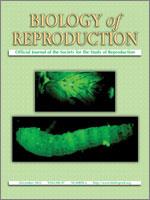In eukaryotic cells, 3′ untranslated regions (3′ UTRs) of mRNA transcripts contain conserved sequence elements (motifs), which, once bound by RNA-binding proteins, can affect mRNA stability and translational efficacy. Despite abundant sequences contained within the 3′ UTRs, only a limited number of motifs are known to interact with RNA-binding proteins and have a role in mRNA fate control. Spermatogenesis represents an excellent in vivo model for studying posttranscriptional regulation of gene expression because numerous mRNAs are transcribed in late pachytene spermatocytes and/or round spermatids, but their translation will not occur until many hours or even days later, when they have developed into elongated spermatids, in which transcription has long been shut off because of the increasingly condensed chromatin. Translationally suppressed mRNAs are sequestered and confined to ribonuclear protein particles, and their loading onto the ribosomes marks their translation. By bioinformatic sequence analyses of the 3′ UTRs of translationally suppressed mRNAs during spermatogenesis, we identified numerous novel sequence elements overrepresented in the transcripts subject to posttranscriptional regulation than in the unregulated transcripts. These include AU(U/A)(U/A)UGAGU and (A/U)AUUA(U/C/G) for genes translationally upregulated in early spermiogenesis, and (G/A)GUACG(U/C/A)(A/U)(A/U) and UGUAGC for genes translationally upregulated in late spermiogenesis. The bioinformatic approach reported in this study can be adapted for rapid discovery of novel regulatory elements involved in mRNA fate control in a wide range of tissues or organs.
How to translate text using browser tools
10 October 2012
Bioinformatic Identification of Novel Elements Potentially Involved in Messenger RNA Fate Control During Spermatogenesis
R. Keegan Idler,
Grant W. Hennig,
Wei Yan
ACCESS THE FULL ARTICLE

Biology of Reproduction
Vol. 87 • No. 6
December 2012
Vol. 87 • No. 6
December 2012
delayed translation
Male infertility
posttranscriptional regulation
RNA-binding protein
sperm
testis




